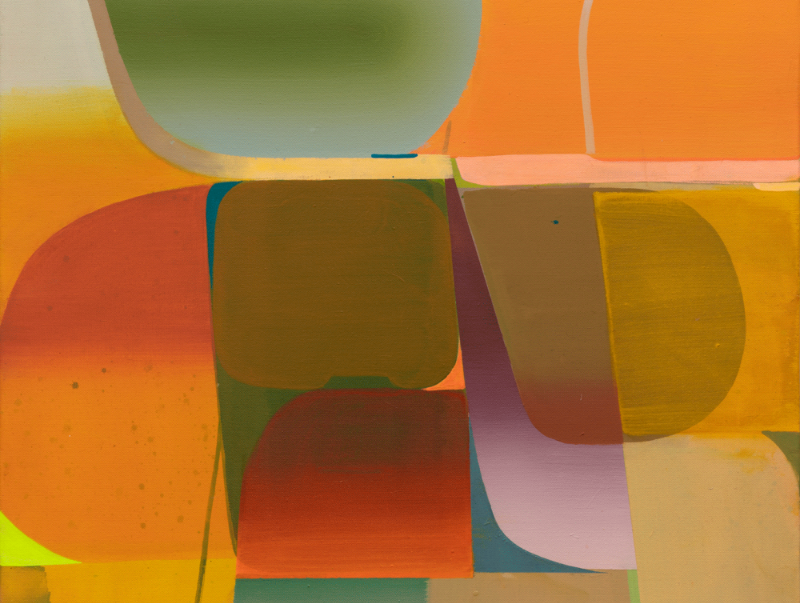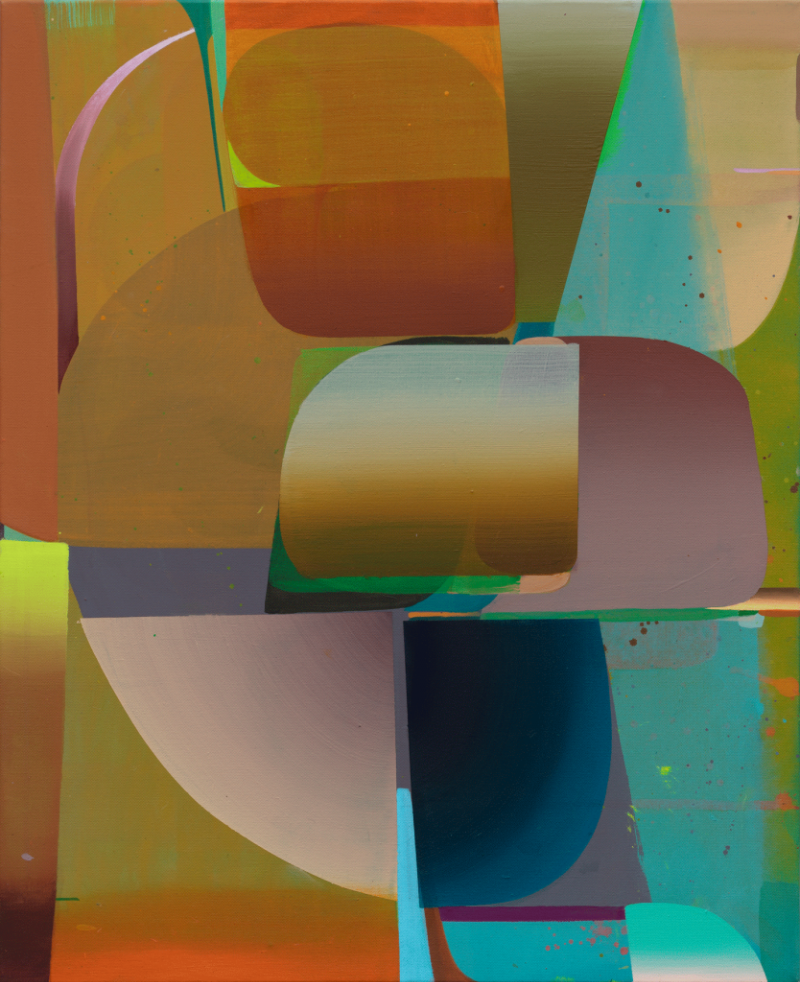
| Period| | 2020.03.05 - 2020.05.09 |
|---|---|
| Operating hours| | 10:30 - 18:00 |
| Space| | Perigee Gallery |
| Address| | 18, Banpo-daero, Seocho-gu, Seoul, Republic of Korea |
| Closed| | Sundays, public holidays, December 31, January 1 |
| Price| | Free |
| Phone| | 070-4676-7096 |
| Web site| | 홈페이지 바로가기 |
| Artist| |
|
정보수정요청



|
|
Exhibition Information




<Charged Zero> Seung Oh Shin(Director of Perigee Gallery) Nakhee Sung has continued to bring about musical rhythms and cadences using the most fundamental elements of painting, points, lines, and planes and has demonstrated a sense of movement begot by organically gliding and freely flowing hues. Lately, however, unlike in her previous pieces, Sung has been displaying works which feature prominent wide color fields. What can be interpreted from such a shift? As we can surmise from her use of musical terms for her exhibition title and the names of her works, Sung has done her utmost to attain her own distinctive idioms through a wide variety of materials and unrestricted brushwork. Her work relies on a method of creating a scene by intentionally filling empty spaces when contrasting parts are in an unbalanced state. As a result, her work seems to depend ostensibly on intuitive expression, but she resigns herself to following where her brush leads, consciously putting forth her intentions, even in her unconsciousness. As her choices are instantly made, variations often take place. Her works appear as scenes of events fraught with tension where mutually disparate elements push and pull one another and become entangled. All the same, the artist does not tread a preposterous, bizarre path thanks to the obvious structure she has chosen. The Sequence series on display at this exhibition, however, is a showcase of methods that are different from her previous works. While her previous pieces were accompanied by a dynamic and pungently sensual pleasure and viewers made attempts to follow her intention, her new works create a sense of space as opposed to a sense of movement since they remain restrained and static. Her exploration of this new method is seen to have begun with her Transpose series. The definition of this title meaning “to write or perform a composition in a key other than the original or given one” enables us to make the analogy that the artist has explored some sort of seismic change in order to embark on a new chapter instead of searching for variations anchored in preexisting situations. We can also perceive from the exhibition title Modulate that she has continued her experiment with this subject. Aside from the title, the use of tools that are different from the ones she has previously worked with is also a great change: she has adopted the use of wider brushes and smaller canvases than before. Let us take a closer look at the Sequence series. This series seems to enlarge her preexisting work. Sleek forms derived from color fields that are geographically connected and neatly stacked up appear as digital pixels. Looking closer, these color fields laden with brush strokes seem to overlap in many layers as if they are soaking into the surface. Her brushwork demonstrates a fusion of straight lines and curves and creates continuously fluid images, dividing a scene vertically, horizontally, or diagonally and refracting it into curves. The traces of colors flowing around the edge of a canvas enable viewers to sense the masked subtle construction of her scenes. As a result, a sense of movement and space is immanent in such images and bears resemblance to scenes seen from the windows of a train that go up and down or are pushed backward. What did she choose through such changes? Her works represent an overlap of restraint and freedom with brushstrokes and color fields that have been laid one upon another. While her previous works were an attempt to look for something in a composition that seems not composed, she seems to concentrate on maintaining a distance that arises when doing something, freed from the control given by what is constructed. The method she previously adopted involved merging parts together to achieve the whole, resting on the directivity of forging the whole by putting parts together. A frame of harmony in which other factors are determined by parts is inevitable in her work. This invisible process is a boundary she taps into as a crucial way to create her art. Her work inevitably undergoes a process of filling and emptying to release the feelings innate in herself to the outside world while being conscious of a sense of balance. This has helped her to naturally capture musical propensities like a sense of rhythm and dynamism within her painting. In contrast, however, the Transpose and Sequence series view things that grow apart and become vague, even when she makes efforts to find or complete something and keeps at a spatial and temporal distance. Taking a closer look at the Sequence series, its images seem to be still pictures that swirl by the artist and halt before an unidentified external force before they are captured on camera. As examined above, her color fields are connected and stacked, taking up each part of the work. They coexist instead of pulling or pushing one another. Based on some clues that can be gained from her remarks, Sung has recently spent a lot of time thinking about gravity. This can be a critical clue to understanding the new direction of her work. Unlike how she previously concentrated on an emission of energy innate in herself, recently she has been perceiving and embracing external strength, something which implies a big change in her ideas. Thus, she focuses primarily on the result itself that comes about when her work is completed through slow movements made over a long period of time, fully aware of both the material and non-material influences from her surroundings. This is in contrast to a method that focuses on the actual process that she keeps in balance through a rapid change in her attitude. In this way, her brushstrokes and hues unmask something in an apparent way and erase previous marks by blending her instinctive senses, gradually covering their surfaces in the process. This outgrowth is not a simple kind of harmony; while it does involve the oneness of the interior and exterior, it is not an artificial union that is in sync with different things. That is, these “parts” call to mind their dim existence instead of being “parts” that vie in dynamic ways to take the place of others. In the end, she brings a non-material force to her own inner world and delivers her work as an outgrowth of this process to a condensed scene. With this in mind, what does Sung consider to be important in her recent works? Starting from the minor parts, she has thus far created artworks while filling necessary portions of her works and abandoning unnecessary ones. Her painting derives from a constant interest in these “parts” that she has consistently honed. She focuses primarily on the process of completing a minor part by a choice gained or rejected from her ever-changing real circumstances and her inner world. As a result, she winds up with a composition in which things that are foreign to one another in terms of characteristics have been arranged. The artist merges parts that have been amassed in this way and showcases newly invoked things through endlessly repeating acts of painting. In terms of her work, of most importance is the choice of how to perceive filled or empty parts and how to react to them. After all, her paintings appear both filled and not filled at the same time since they reflect the life she has chosen. She is minutely interested in each part. Sung displays new works in this way, but there is no change in her demeanor. The only difference is that she chooses insufficient parts in her recent work since she wants to attain the whole with condensed parts. All the same, each whole work on display at this exhibition appears altered in its position as a part of the entire exhibition. In a broad sense, these works have no fixed position since they are organically associated with all of her previous pieces as parts or completed ones. Therefore, her seemingly completed works are both completed yet not completed, and remain filled but still empty. The new type of a shift on show in this exhibition seems more suitable for the revelation of parts as the result than the process of her choice. To do this, she has time to thoroughly perceive and comprehend something. Unlike her previous work, she forges images that coexist, sharing part and whole as well as interior and exterior, gradually filling parts entangled with points, lines, and planes in addition to colors on a small canvas. Her new paintings appear orderly with moderate brushwork but hold an inherent invisible strength. That’s because some unrestricted movement is sensed within her controlled pieces. In conclusion, this act of distancing is meant to consciously eschew a state of being that is fixed to an unstable situation in which each sphere and strength are maintained as harmonies among parts that are recurring more frequently. Thus, the Sequence series produced in this new way resembles fake images or empty things in which every force returns to nothing, consequently resulting in a state of repleteness through the fusion of these parts’ diverse characteristics. What she tries to reach in the end is a state of zero where her work strikes a balance between an external force (like gravity) and an internal force that a subject (like “me”) retains, or a perfect situation in which everything becomes one without any distinction between the parts and the whole. Nevertheless, this is an unknown destination that we cannot easily reach and whose location we do not even know. As addressed several times above, she has continued to work on merging “parts” that are in an endless cycle between her eagerness for completeness and repleteness in her inner world and her doubts about incompleteness and insufficiency. This is concerned with the theme of “parts” that takes root in the relationship between Sung’s painting and her life or the way she showcases herself.
